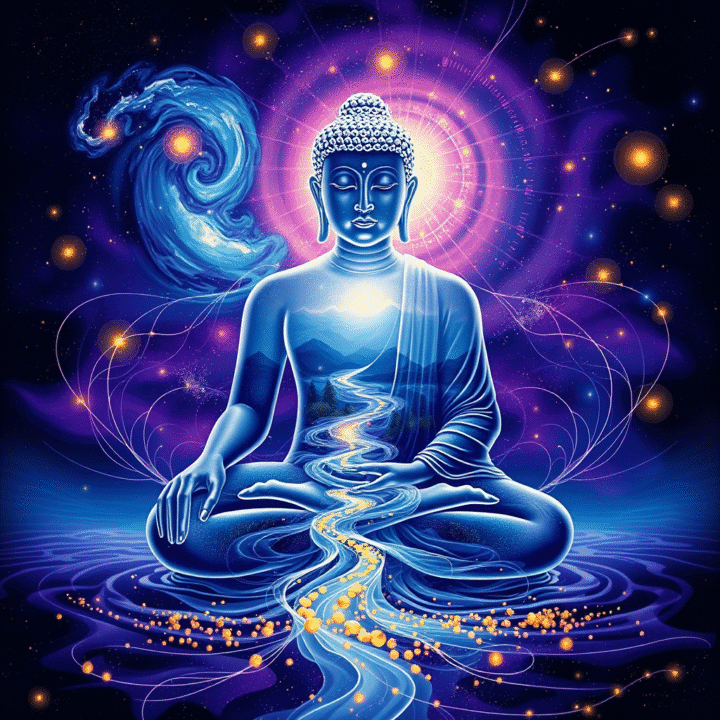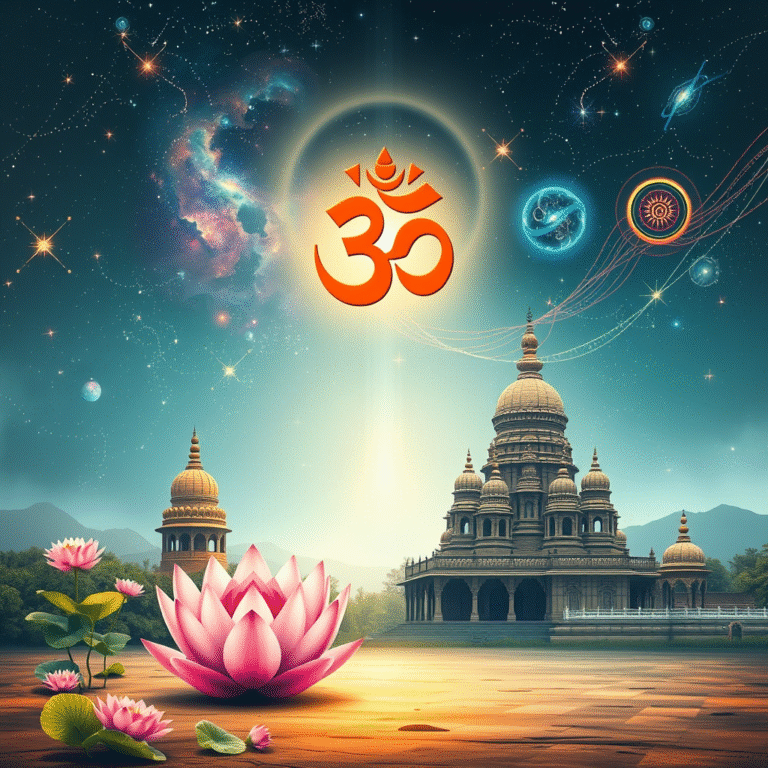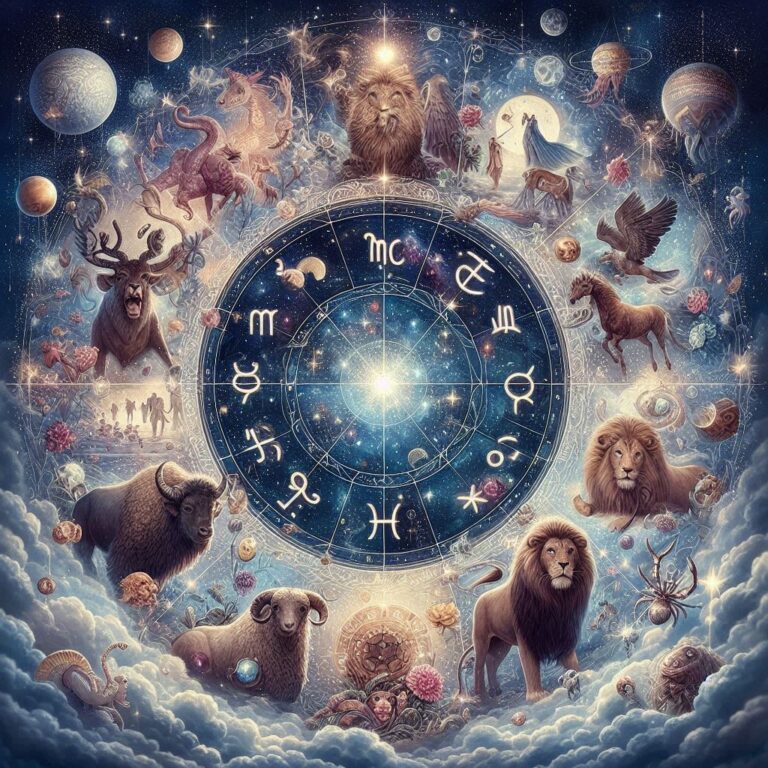
Buddhism, with its serene imagery and profound philosophy, has captivated millions worldwide. Yet, like any ancient and deep tradition, its core teachings are often simplified, distorted, or completely misunderstood. These misinterpretations can lead to confusion, dismissal, or even a practice that misses the heart of the Buddha’s message. Let’s dive into five of the most pervasive misunderstandings and uncover their authentic meaning, offering clarity for both newcomers and seasoned practitioners.
1. Misconception: Nirvana is Escaping Life or Annihilation
The Misunderstanding: This is perhaps the most common and profound error. Many hear “extinguishing the flame” or “liberation from Samsara” and picture nirvana as a kind of heavenly oblivion, a final escape from existence itself, akin to eternal sleep or nothingness. It fuels the idea that Buddhism is fundamentally pessimistic and life-denying – a desire to “opt out” of reality.
The Reality: Nirvana is not annihilation, not non-existence, and not an escape from life. The Buddha explicitly rejected these views. Nirvana (Nibbana in Pali) literally means “extinguishing” or “blowing out,” but what is extinguished? The fires of greed (raga), hatred (dosa), and delusion (moha). It is the complete cessation of suffering (dukkha) and its root causes.
Think of it this way: Imagine a mind perpetually clouded by craving, aversion, and confusion. This state is suffering. Nirvana is the radical clarification and purification of the mind. It’s the state where these defilements are utterly uprooted, leaving a mind characterized by:
Unshakable Peace (Santi): Freedom from inner turmoil, agitation, and the restless chase of desires or fears.
Unconditional Happiness (Sukha): A profound well-being not dependent on external conditions.
Unimpeded Clarity (Vipassana): Seeing reality exactly as it is, free from distorting lenses.
Unconditional Freedom (Vimutti): Liberation from the chains of reactive patterns, conditioning, and the endless cycle of unsatisfactoriness (Samsara).
Nirvana is awakening to the true nature of reality – the ending of ignorance, not the ending of experience. It is the ultimate flourishing of human potential within this life, not a rejection of it. The Buddha described it as the “highest bliss” and encouraged its realization here and now. It’s the end of suffering, not the end of being.
2. Misconception: Anatta Means “No Self” in a Nihilistic Sense
The Misunderstanding: “Anatta” (Not-Self) is often translated as “no self,” leading many to believe Buddhism teaches absolute non-existence of a person. This can sound nihilistic: “I don’t exist, nothing matters.” It can lead to confusion about personal responsibility, ethics, and even the purpose of practice.
The Reality: Anatta is not a metaphysical doctrine proclaiming “you don’t exist.” It is a practical strategy for liberation and a profound insight into the nature of existence. The Buddha avoided abstract debates about “is there a self?” Instead, he focused on analyzing experience. He invited investigation: Look at everything you typically identify as “me” or “mine” – the body (rupa), feelings (vedana), perceptions (sanna), mental formations (sankhara), and consciousness (vinnana). Are any of these five aggregates (khandhas) permanent, satisfactory, and completely controllable? Can you find a stable, independent, unchanging “self” within or apart from them?
The answer, consistently, is no. Everything is impermanent (anicca), subject to suffering when clung to (dukkha), and devoid of an inherent, independent, fixed essence (anatta). This is the core of Dependent Origination (Paticca Samuppada): all phenomena arise and cease based on conditions.
What Anatta Means: It means no independent, permanent, unchanging self-entity exists. What we call “self” is a dynamic, interdependent, ever-changing process – a flowing river of aggregates, not a solid rock. Clinging to any part of this process as “I,” “me,” or “mine” is the root of suffering.
What Anatta Does Not Mean: It does not deny conventional existence (“I” as a person with a name, history, and responsibilities). It does not deny agency or the law of karma. It does deny a permanent soul or essence that survives death unchanged. Understanding anatta dissolves the illusion of a separate, solid self, leading to freedom from self-centered craving and aversion – the keys to ending suffering. It fosters interconnectedness, not nihilism.
3. Misconception: Dukkha Means “Life is Suffering” (Pure Pessimism)
The Misunderstanding: The First Noble Truth is often summarized as “Life is Suffering.” Taken at face value, this paints Buddhism as relentlessly bleak, ignoring joy, love, and beauty. It seems to suggest existence itself is inherently miserable.
The Reality: “Dukkha” is a rich Pali term far more nuanced than just “suffering.” It encompasses:
Plain Suffering: Physical and mental pain (dukkha-dukkha).
Suffering due to Change: The pain of losing what we like or getting what we dislike (viparinama-dukkha). Happiness is fleeting.
Suffering of Conditioned Existence: The subtle, pervasive unsatisfactoriness arising from clinging to impermanent, selfless phenomena (sankhara-dukkha). Even neutral or pleasant experiences have an underlying tension because they are unstable and cannot provide lasting fulfillment when grasped.
The Buddha wasn’t declaring life is only suffering. He acknowledged happiness and pleasure. His point was diagnostic: he identified the chronic condition of unsatisfactoriness that permeates unenlightened existence because we grasp at what is impermanent and not-self. We crave permanence, control, and a solid self in a world that offers none of these things inherently. This mismatch is dukkha.
The First Noble Truth is not the final word, but the diagnosis that makes the cure possible. Recognizing dukkha is the essential first step towards understanding its cause (craving/clinging – the Second Truth) and pursuing its cessation (the Third and Fourth Truths). It’s a call to clear-eyed awareness, not despair. It highlights the potential for a happiness not dependent on fleeting conditions.
4. Misconception: Karma is Fate, Predestination, or Cosmic Punishment/Reward
The Misunderstanding: Karma (Kamma in Pali) is often seen as an unchangeable destiny, a cosmic scorecard where past actions mechanistically determine your present and future, leaving no room for free will. It’s sometimes confused with “fate” or seen as a system of divine punishment and reward.
The Reality: Karma literally means “action” or “deed,” specifically volitional action – actions driven by intention (cetana). The Buddha taught: “Intention, I tell you, is kamma. Intending, one does kamma by way of body, speech, and intellect.” (AN 6.63).
Karma is about Cause and Effect, not Fate: It’s the universal principle that volitional actions have consequences. Wholesome (skillful) actions rooted in non-greed, non-hatred, and non-delusion tend to produce pleasant results. Unwholesome (unskillful) actions rooted in greed, hatred, and delusion tend to produce unpleasant results. This is a natural law, like gravity, not a moral judgment imposed by a deity.
Karma is Malleable: This is crucial. Your present moment is shaped by past karma, but your present intentions and actions shape your future. The past sets conditions, but your choices now are the primary determinant of what happens next. Awareness and mindful action in the present allow you to break negative karmic patterns and cultivate positive ones. Karma emphasizes responsibility and potential for change.
Karma is Not Punishment/Reward: The results of karma are natural outcomes, not rewards from a god or punishments for sin. The focus is on the quality of the mind (wholesome/unwholesome roots) and the cultivation of wisdom and compassion to create future conditions for happiness and liberation. It’s about understanding the mechanics of cause and effect to make skillful choices.
5. Misconception: Meditation is the Only Path (Neglecting Ethics and Wisdom)
The Misunderstanding: Modern popular culture often reduces Buddhism to meditation (especially mindfulness). Many believe that sitting silently, focusing on the breath, and achieving calm is the entirety of the path. This overlooks the rich, integrated framework the Buddha actually taught.
The Reality: Meditation is vital, but it is only one part of the Noble Eightfold Path, which the Buddha presented as the comprehensive path to the end of suffering. The path is traditionally grouped into three essential trainings:
Ethical Conduct (Sila): Right Speech, Right Action, Right Livelihood. This establishes the foundation. Without ethical behavior, the mind is agitated by guilt, remorse, and social conflict, making deep meditation and clear wisdom impossible. It creates harmony with others and inner stability.
Mental Discipline (Samadhi): Right Effort, Right Mindfulness, Right Concentration. This includes meditation practices (calm-abiding/samatha and insight/vipassana) to train the mind, develop focus, stability, and deep awareness.
Wisdom (Panna): Right Understanding, Right Intention (Thought). This is the culmination – the direct insight into the true nature of reality (the Three Marks: Impermanence, Suffering, Not-Self) and the development of wholesome motivations (renunciation, loving-kindness, compassion).
These three are interdependent and mutually reinforcing. Strong ethics supports a calm mind for meditation. A calm, concentrated mind is necessary for penetrating insight (wisdom). Wisdom deepens understanding of why ethics are essential and guides meditation practice. Neglecting ethics while trying to meditate is like building a house on sand. Focusing only on calm states without developing wisdom leads to temporary peace but not liberation. Wisdom without the stability of meditation and the grounding of ethics remains intellectual and ineffective.
Meditation is a powerful tool within the path, but the path itself is a complete way of life integrating how we act, how we train our minds, and how we understand the world.
Beyond the Misconceptions: The Heart of the Dhamma
Dispelling these misunderstandings reveals the profound practicality, optimism, and radical realism at the heart of the Buddha’s teachings. Buddhism is not about:
Escaping life, but fully awakening within it.
Denying existence, but understanding its fluid, interdependent nature.
Wallowing in pessimism, but honestly diagnosing the cause of suffering to cure it.
Fatalism, but empowering responsibility through understanding cause and effect.
Just sitting quietly, but cultivating a complete path of ethical living, mental training, and liberating wisdom.
The Buddha offered a path of investigation, experience, and transformation. He encouraged his followers not to take his word blindly, but to “come and see” (Ehipassiko) for themselves. By clarifying these core teachings, we move beyond caricatures and engage with the Dhamma as it truly is: a timeless guide to understanding the mind, ending suffering, and realizing the highest potential for peace, compassion, and freedom, right here in this very life. The path isn’t about becoming someone else; it’s about awakening to who and what you truly are, beyond all misunderstanding.




